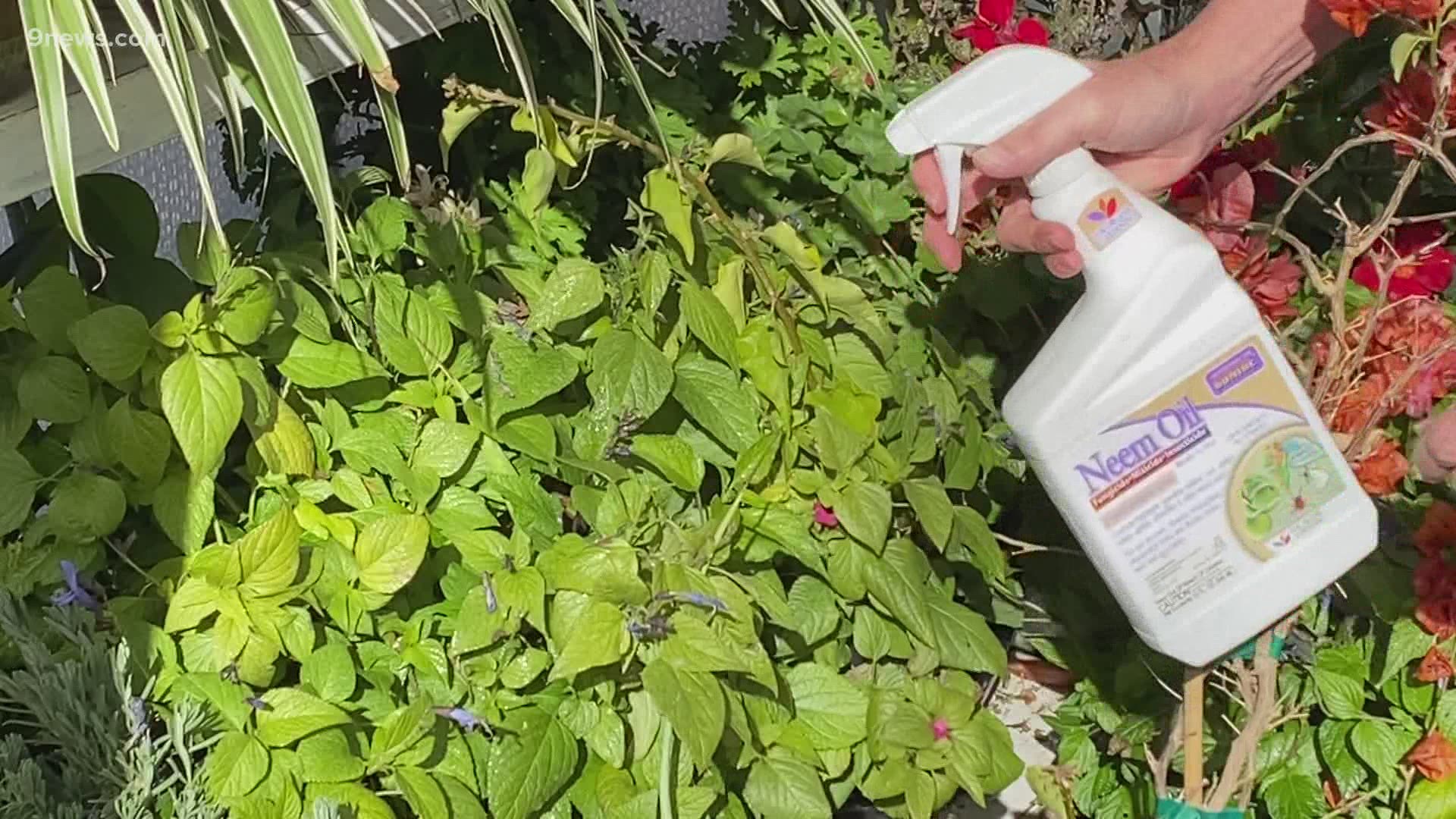DENVER — Whether you take over your house with cuttings, or you’ve been inspired to add some living color to your home, it's important to keep a watchful eye out for insects and pests.
Because we don’t have any beneficial insects (ladybugs, praying mantis, wasps, spiders, etc.) to prevent the bad bugs from taking hold, follow a few simple steps so you don’t have an infestation.
Make sure to buy your plants from a reputable source, inspect your plants before buying and regularly check for infestations.
Here are some commonly found indoor bugs and how to treat them:
Mealybugs gross me out the most! They are a small, white, soft-bodied bug that look a little like mold or fungus and they can hide in plant crevasses, and attach themselves to stems or the underside of leaves. Unfortunately, all my coleus cuttings became infested with these icky creatures, but I prevailed with Neem Oil and a Q-tip, swabbing each individual bug. You may need to treat Mealybugs several times to rid them completely, but if caught early they are easy to kill.
Spider mites are a sap sucking plant that would be impossible to locate if not for the fine webbing they spin. These buggers thrive in warm, dry conditions and I don’t mean dry soil, but a lack of humidity inside our homes. The easiest way to get rid of them is to regularly spray them off with cold water and then gently wipe them off with a soft cloth. If your infestation is bad, then use a Neem Oil spray.
To add humidity to your houseplants, place pebbles or marbles in a saucer, place your houseplant on top, and as you water any excess will drain out and add beneficial humidity.
Aphids are common on indoor and outdoor plants; they like tender new growth on foliage and blooming plants. As with Spider Mites, knock aphids off with a spray of cool water. Insecticidal Soap and Neem Oil will also work.
And the most safe, organic treatment for spider mites and aphids is Dr. Bronner’s Pure-Castile Soap. Add a tablespoon to a spray bottle of water and spray away. The soap will break down the insects natural outer coating, causing them to die from rapid dehydration.
Fungus gnats are annoying flying bugs that are caused by over-watering. The easiest way to cure fungus gnats is to stop over-watering. Yellow sticky traps placed in your pots will capture the adults. Sprinkling Mosquito Bits on the soil may help short term, but correct watering will solve the problem. If you don’t know how much to water, invest in a soil moisture reader. It’s an inexpensive, fool proof way to make sure you’re watering enough but not too much.
In only the most extreme conditions do I use a systemic insect control, and never on my outside plants where it would be harmful to bees, hummingbirds, and butterflies. When sprinkled on the soil a systemic insect control will be absorbed by the roots of the plant and be carried through the plant into new growth and blooms. Use this with caution.
Keep after those bad bugs and happy indoor winter gardening!
SUGGESTED VIDEOS: Mile High Mornings

